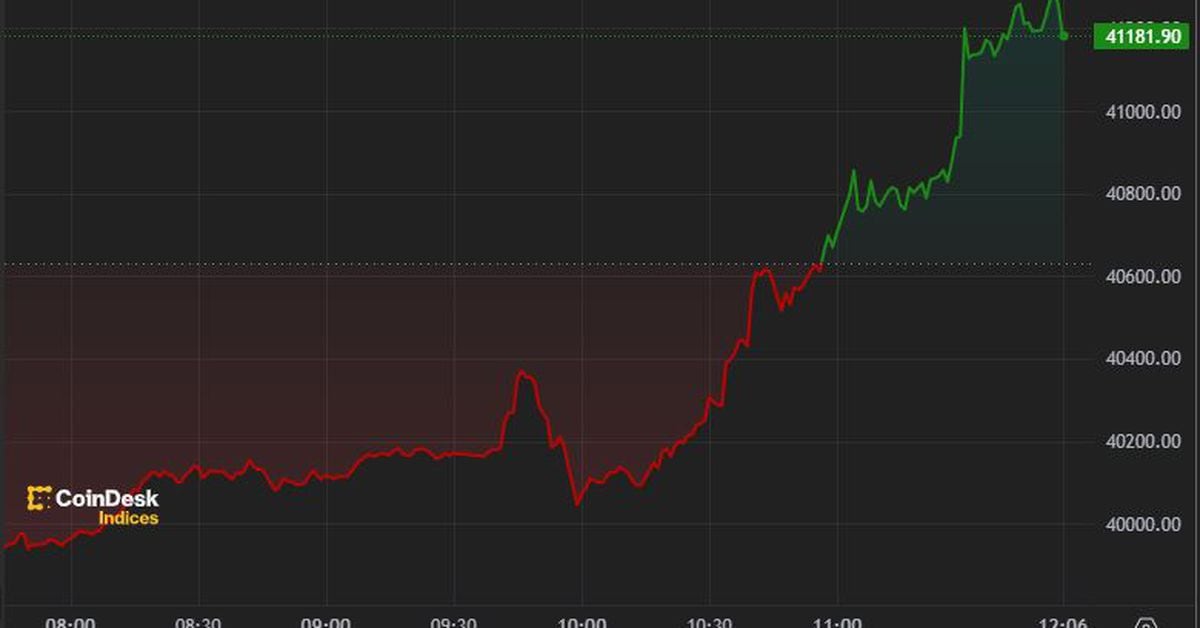Decoding Zephyr A new stablecoin protocol combining privacy and over-collateralization based on Monero.
Unveiling Zephyr A Revolutionary Stablecoin Protocol Fusing Privacy and Over-Collateralization Inspired by MoneroWritten by: Deep Tide TechFlow
Recently, there has been new movement in the stablecoin race track.
The privacy stablecoin protocol Zephyr is rapidly rising, with the token ZEPH’s market value increasing fivefold to 30 million USD within a month. Why is it able to stand out in the fiercely competitive stablecoin market?

- Cryptocurrency exchange BackLianGuaick attracts attention leveraging FTX’s former executives’ label, seizing the opportunity of Solana’s ecological heat to promote PYTH airdrop.
- MT Capital Insight Application chain migration and economic model updates drive DYDX price wheel growth.
- Responding to Vitalik’s call in the first place? Quick view of L2 Redstone, the chain game combined with OP+Plasma.
First of all, Zephyr is built on the Monero platform, and even the wallet is the same.
ZEPH is the base currency of the protocol, with a total supply of 18.4 million, and the current circulating supply is 1.35 million. The Zephyr protocol operates on the RandomX proof-of-work (PoW) algorithm, aiming to optimize general-purpose CPUs and support decentralized and egalitarian mining. However, the block time for Zephyr is 120 seconds, and its emission curve is slightly slower than that of Monero. This choice was made to reward early adopters and limit dilution, slow down initial emissions, and mitigate any inflationary impact on the price of ZEPH, thus enhancing the stability of the algorithmic stablecoin system. The following chart compares the emissions with Bitcoin and Monero:

The core of the Zephyr protocol is a stablecoin protocol supported by cryptocurrency through over-collateralization, which is perfected by the innovative Djed protocol.
What is DJED? Inspired by AgeUSD, Djed is a stablecoin protocol developed by renowned organizations Emurgo, IOHK, and the Ergo Foundation, which has a verified stable mechanism.
Its principle can be summarized as an autonomous bank that buys and sells stablecoins within a price range tied to the target price. The stable mechanism has been market-tested, and currently the zephUSD backing behind it has hardly deviated from its peg.
How does ZEPHYR avoid the “death spiral”?
Although Luna’s collapse happened some time ago, the “death spiral” is still an unavoidable topic for stablecoins. So, how does ZEPHYR avoid the “death spiral”?
The “death spiral” typically refers to the situation where an algorithmic stablecoin protocol is forced to mint excessive base tokens to maintain the peg of its stablecoin, leading to a downward spiral in the value of the base token.
Zephyr Protocol ensures that no additional ZEPH is spontaneously created because the support for ZephUSD is over-collateralized by ZEPH in the reserve, and importantly: the core mechanism of this stablecoin is not dependent on algorithms. The supply of ZEPH only grows through regular emissions. This approach guarantees the stability and value of the network, as a constant emission rate eliminates the risk of sudden inflation shocks that could disrupt the system.
In other algorithmic stablecoin protocols, stablecoin stability is typically ensured through spontaneous and unlimited minting of the underlying token, leading to a potential death spiral. Zephyr fundamentally does not follow this approach.
Zephyr Protocol v1.0.0
On October 1, 2023, Zephyr Protocol implemented a crucial hard fork, enabling two new assets on the Zephyr blockchain. Zephyr Stable Dollar ($ZSD) and Zephyr Reserve Shares ($ZRS).
$ZSD is a privacy stablecoin supported by ZEPH over-collateralization.
$ZSD’s main advantages over other stablecoins are:
– Privacy: $ZSD transactions hide the amount, recipient, and destination address.
– Decentralization: Other stablecoins (e.g., USDT) are operated by centralized entities, contrary to the decentralized spirit of DeFi.
– No underlying token inflation: Algorithmic stablecoins must mint the underlying token to maintain their peg, leading to inflation. $ZSD is not algorithmically pegged but is backed by cryptocurrency.
– Over-collateralization: When minting $ZSD, the reserve needs to have >400% ZEPH to support $ZSD. USDT is backed by <1% treasury bonds.
– Proven concept: The Zephyr Protocol draws inspiration from the verified Djed Protocol, which has been implemented alongside SigmaUSD (Ergo) and Djed (Cardano) over the years.
– Low transaction fees: The cost of transferring $ZSD.
Meanwhile, Zephyr Reserve Shares ($ZRS) holders receive a portion of block rewards in each block as a premium for supporting Zephyr Stable Dollar ($ZSD). Reserve providers effectively bet on Zephyr in terms of value and adoption.
(Source: Images embedded in the HTML code)For incentive measures for reserve providers:
– Leverage Position: As the price of Zephyr rises, the value of ZEPH in the reserve also means there are more available equity.
– Conversion Fee: As adoption and protocol usage increases, more fees will be generated, thus increasing reserve assets.
– Block Rewards: 20% of block rewards go directly into the reserve, supporting the reserve and providing another way for ZRS to appreciate.
– Spot and MA Divergence: Due to the dual pricing of Zephyr assets, users will use the "difference" exchange rate between spot prices and moving average prices. This mechanism is used to prevent manipulation but also provides additional benefits for the reserve.
This incentive structure is called the "pseudo-staking reward" on $ZRS in the Zephyr protocol.
Example of Asset Collaboration within the Zephyr Ecosystem:
Let us understand the mechanisms and functionalities of the Zephyr protocol with two user scenarios. For simplicity, we exclude fees and other additional protocol features in these examples:
Scenario 1: When the base currency (ZEPH) price rises
Assume Alice is a user with 100 ZEPH and seeks value stability.
On the other hand, Bob has 200 ZEPH and seeks asset appreciation, so he bets on the future value of ZEPH.
Bob becomes a reserve provider by depositing his 200 ZEPH into the Zephyr protocol and mints reserve tokens ($ZRS). As long as the reserve exceeds the minimum reserve ratio, these tokens can be redeemed for underlying ZEPH reserve at any time.
Alice deposits her 100 ZEPH into the protocol and mints stablecoins ($ZSD) worth 100 USD.
Now, the total reserve amount equals 300 ZEPH. Four weeks pass and the price of ZEPH rises by 10%.
Alice, excited about the recent price surge, decides to close her position. She exchanges her 100 USD stablecoins and withdraws 100 USD worth of ZEPH. When the ZEPH price is 1.10 USD, her stablecoins are exchanged for 90.90 ZEPH, leaving 209.1 ZEPH in the protocol reserve for future use.
Bob wants to secure profits and exchanges the remaining reserve with his reserve tokens, receiving 209.1 ZEPH. Therefore, Bob profits 9.1 ZEPH by becoming a reserve provider, while Alice maintains value stability by minting stablecoins.
Scenario 2: When the base currency price falls
Now, let's look at the case of ZEPH price decline. Assume Alice and Bob initially have the same amount of stablecoins/reserve tokens as in the previous example. Four weeks later, the price of ZEPH decreases by 10%.
Alice has decided to convert her stablecoin into 100 US dollars’ worth of ZEPH. When the price of ZEPH is $0.90, she will receive 111.12 ZEPH, leaving 188.88 ZEPH in the protocol reserve.
Next, Bob decides to close his reserve token exposure and receives the remaining reserve tokens, which amount to 188.88 ZEPH. In this case, Bob ends up losing 11.12 ZEPH by providing the reserve to the protocol, while Alice maintains the stability of her value relative to the US dollar through the stablecoin ($ZSD).
From the above example, it is not difficult to see that Zeph, ZSD, and ZRS work together to form a stable flywheel:
- Zeph – a limited supply base coin
- ZSD – stablecoin
- ZephRSV – earns block rewards and a portion of the profits from minting and redemption fees
However, privacy coins always carry regulatory risks. Many governments do not recognize privacy coins, which may restrict their appeal to regular cryptocurrency users. This is also a challenge currently faced by ZEPHYR. The solution Zephyr has come up with is to integrate with decentralized exchanges (DEX), but the effectiveness of this approach remains to be seen.
We will continue to update Blocking; if you have any questions or suggestions, please contact us!
Was this article helpful?
93 out of 132 found this helpful
Related articles
- Tick Tock Crypto Leaders Have Limited Time to Convince the IRS
- Trump, Tucker, and Bitcoin An Unconventional Trio Fueling America’s Financial Revolution
- Creating NFT Art with Intelligence A Guide to the New Project Unigraphs on Ordinals
- Who can outperform Bitcoin? Analysis and summary of the exchange rate trends of 350 altcoins against BTC.
- Quick Look at NFT Innovative Market Liquid Delegate How to Trade NFTs with Wrapped Delegation Rights
- In the FOMO market, should you chase after gains? You should pay attention to these 7 trading tips.
- The market keeps levering up, is the bull market really back?






